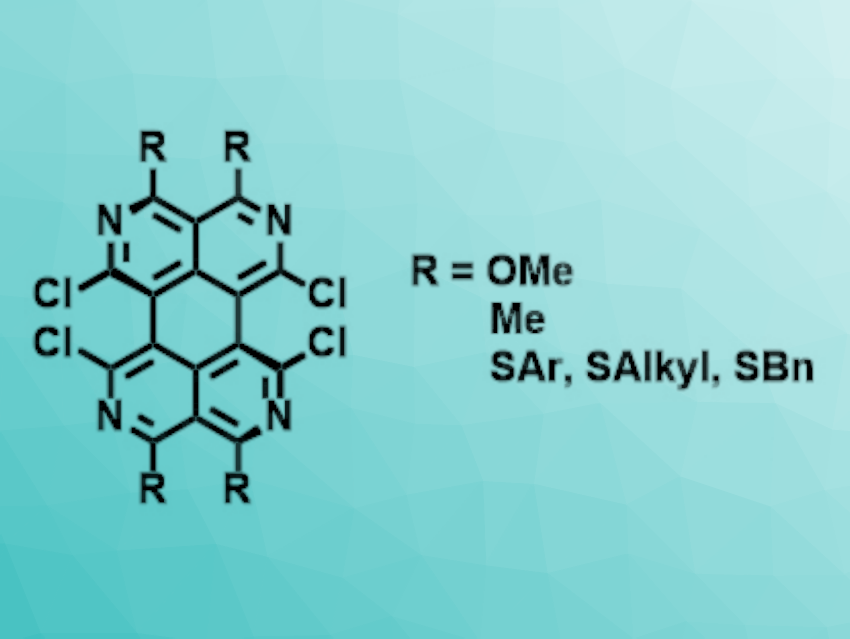Molecular polaritonics is an emerging concept in chemistry where light and matter are coupled to form hybrid light-matter states. Strong light-matter coupling leads to mixed quasi-particles called exciton-polaritons. These particles have interesting properties. Exploring this concept’s full potential, requires, among other things, the development of suitable organic molecules as molecular emitters. In this context, (hetero-)polycyclic aromatic compounds are interesting candidates. One promising class of molecules is derived from tetraazaperylene.
Jana Zaumseil, Lutz H. Gade, University of Heidelberg, Germany, and colleagues have synthesized a range of peri-functionalized tetraazaperylene derivatives with different substituents (general structure pictured) and examined their optical properties. The team started from a perchlorinated tetraazaperylene, which was reacted with different thiolates to give thioether derivatives (R = SR’). Alternatively, the starting compound was reacted with in-situ-generated potassium methoxide to obtain a peri-methoxy-substituted derivative (R = OMe). When the thioether derivatives were reacted with LiCuMe2, methyl-substituted derivatives could be obtained (R = Me).
The team found that peri-functionalized tetraazaperylenes can be used as materials for strong light-matter coupling due to their high extinction coefficients and fluorescence quantum yields. Both alkylated and benzylated thioether derivatives displayed high fluorescence quantum yields of up to 80 %. Thus, peri-functionalized tetraazaperylenes can be considered promising candidates for molecular polaritonics.
- Peri‐Functionalized Tetraazaperylenes: Strong Emitters for Molecular Polaritonics,
Tobias Wesp, Parvathi Valsalan, Alexander Kochan, Manuel Hertzog, Hubert Wadepohl, Jana Zaumseil, Lutz Gade,
Chem. Eur. J. 2022.
https://doi.org/10.1002/chem.202202661




![Synthesis of [c2]Daisy Chains via Mechanochemistry](https://www.chemistryviews.org/wp-content/uploads/2025/04/202504_RotaxanesWithSolidStateMechanochemistry-125x94.png)